Lead Into Your Edge
Feedback Loops

Feedback is invaluable
You are allergic to it, and you can treat the allergy
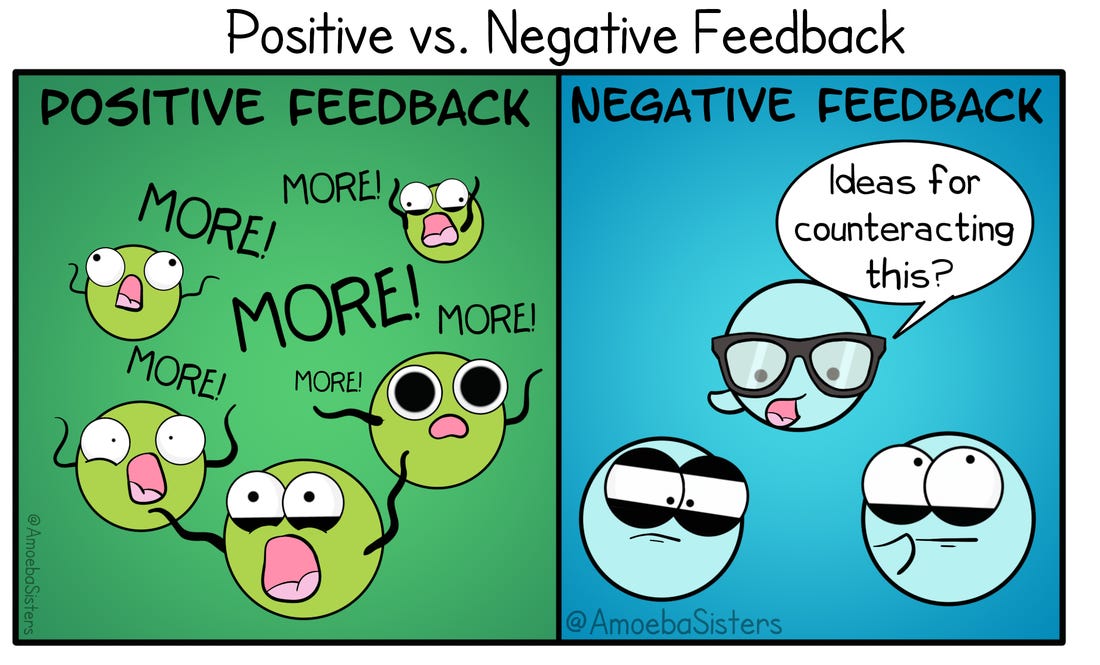
The person you identify as and the person that the world experiences are not the same person. For every person in your life—every person you’ve interacted with—there is an alternate version of yourself out there walking around in their heads.
As a community leader, those alternate versions of you are more material, tangible. Because people look to you as a source of inspiration, stability, and leadership, you will be confronted more often, and often more aggressively, with inconvenient truths about the way you appear to and impact people in your community and life.
Some of those aspects of alternate selves are just assumptions, stories, and false motivations that the people perceiving them ascribe to us. We often call those projections.
Others are objectively valuable insights into who we are and how we walk through the world, that we have not yet accepted.
Too often, people lump those two together and write them off as aggressive, harmful, and useless. This is a massive mistake. Projections are especially useful to leaders and organizations because understanding how we are perceived, even inaccurately, is very valuable. The insights are precious because the opportunity to confront uncomfortable truths about who we actually are is completely invaluable. We call these variances between the things we identify with in ourselves and the aspects of ourselves that we don’t know or refuse to accept our “shadows”.
Everyone has allergic reactions to specific forms of feedback on different difficult topics. It is your responsibility to be more aware of your reactions to these identity triggers than the average person, because reacting poorly and consistently to potentially constructive criticism will lead you into an echo chamber, isolated from one of your most valuable resources: feedback.
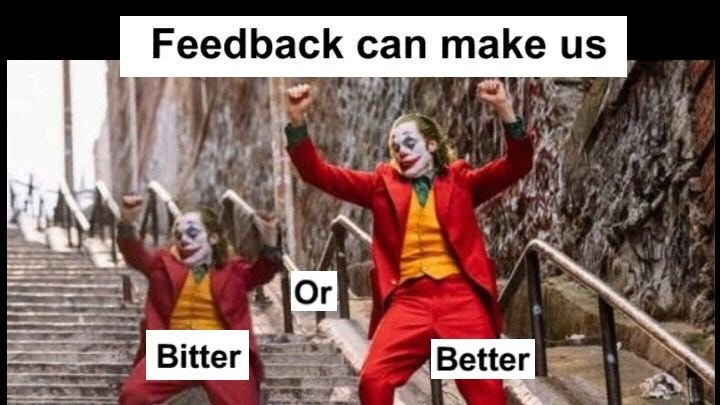
There are many resources available on learning to take feedback gracefully, tactically, and productively, and most of them agree that the first step is understanding your natural triggers and reactions. From there, you can start to design better systems for mining that feedback for useful information, directing your curiosity and discernment to catalogue and act on the pieces you deem to be most useful and actionable, without your ego getting in the way.
Just like individuals, organizations and communities have collective identities. Just like individuals, they are prone to reactions when their identity triggers come up in feedback. Learning to engage difficult feedback with curiosity, objectively evaluate the feedback against values and metrics you’ve designed for this purpose, and then setting actionable, relevant, and responsive goals as a result of that feedback, is one of the best ways to engage in emergent continuous improvement. So, it’s worth the effort.
How to elicit useful feedback
There are two big things to keep in mind when you are considering how best to elicit feedback. You need to offer both the time and the incentive for your community members to provide you with two of their most valuable resources: their attention and insight.
If you want feedback from your community about workshops, trainings, initiatives, programming, or anything else, it is your sacred duty to build it into the process and motivate it.

Let me explain:
Government offices, educational institutions, healthcare organizations, and every fortune 500 company ever is obsessed with generating feedback and optimizing for response rates. As such, the body of research surrounding best practices is… considerable. That research has consistently found two factors **(outside of the survey design itself) **that substantially increase response rates.
You need to differentiate this from just handing them the survey while they are there, which often generates worse response rates than sending it by mail, phone, or email later. You have to build the time into the experience.
Building in and protecting time in the client's, student's, or community member’s normal activities to complete feedback or surveys. In many studies, this more than triples response rates.
This means building in 5-10 minutes as part of the workshop, before you close and before the experience is over. This means making the password to your internet a short survey while they are waiting in the office. This means working with a professor to block out half of a class once a semester. It doesn’t mean: finish 10 minutes early, hand them a form and say “thanks for all the fish”.
Second is incentivizing their feedback, as the invaluable resource that it is.
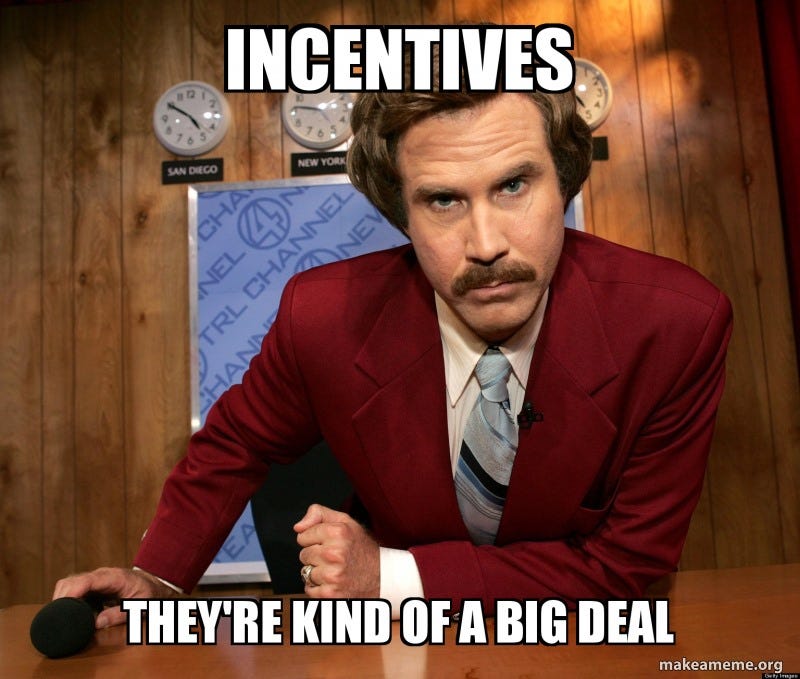
This can mean money, services, priority seating, access to a private event or promo material, or event just public recognition. Honestly, a combination of these has proven to be best, and the efficacy changes based on the survey respondents.
A 2023 meta-study by the Canadian Medical Journal found the best average optimization offer for monetary reward was $6.25 - $8.00 USD, to put a dollar amount on it. Salesforce saw a significant increase in survey and feedback responses when they began featuring success stories resulting from feedback in their newsletters asking for more. Amazon is the most popular mega-store in the world in part because it popularized public reviews and seller responses. Visibility and affirmation increase response rates, especially for regularly solicited surveys and feedback.
Two of the other most common ways to incentivize feedback are access to private events and promotional material that aren’t being given out any other way. Open your doors for a 30min Q&A before your next townhall with drinks and snacks for survey respondents. Give them access to metrics or a write-up that no one else will receive. Be creative… because they are working for you without any other pay.
Make time for feedback, because you won’t find it.
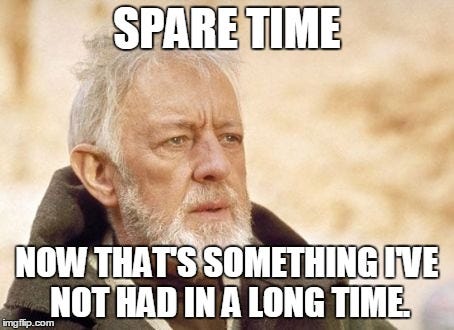
A question we get asked a lot is: “When is a good time for feedback?”
My short response always looks something like: “Literally always, anytime, ever… unless it isn’t.”
The when of feedback, as we briefly touched on in the last section, is determined by three things: when is the best time to capture the feedback, when are you most likely to receive the feedback, and when are you going to process the feedback. These are simpler, often, to answer for a person than for an organization, community, or even a product. The answers change circumstantially as the who and what move the goalpost on the when. As a general rule, I stick to my original statement: ideally, it is always a good time for feedback. If you can receive it productively, record it meaningfully, and keep it from detracting from your other priorities. That said, there are ideal times for feedback, and the biggest takeaway here is this: you need to make time for feedback.
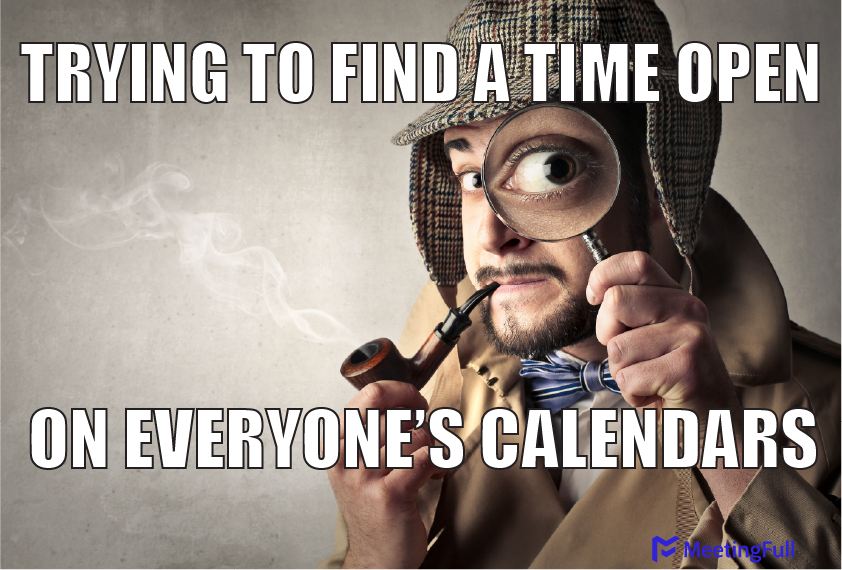
Just as important as incentivizing feedback is making space for it. The best time to capture it is when you have a captive audience. In my classes, we carve out time before the end of a session for feedback. In my cohousing communities, we include and guard a section to share and process feedback, including withholds. At my events, I offer people free beverages and discount tickets for filling out feedback forms before they leave, then let the offer stand in our follow-up emails. After consultations, projects, and in coaching wrap-ups, I always schedule time specifically to offer, elicit, and process feedback.
The time doesn’t make itself, so build it into your sessions and your events, book and schedule specific meetings to mine yourself and your teams for it, and yes, anytime it is possible, make time for it in the moment. There is absolutely no guarantee that the precious insights you pass up in the session, at the event, or mid conversation will be there when you find the time to listen. So, make it.
Affirmation, evaluation, and coaching
![Image - 121026] | You're Doing It Wrong | Know Your Meme](https://substackcdn.com/image/fetch/w_1456,c_limit,f_auto,q_auto:good,fl_progressive:steep/https%3A%2F%2Fsubstack-post-media.s3.amazonaws.com%2Fpublic%2Fimages%2Ff97d49b3-dbd3-4b0f-ab57-8fc6158f878b_1366x768.png)
When you are asking for feedback, it is useful to know what KIND of feedback you are looking for. The answer is that you are likely searching for three kinds, without even knowing it: affirmation, evaluation, and coaching.
Affirmation is an appreciation of things that we have accomplished, a celebration of our greatness and excellence: “What did I/we do well?”
Evaluation is the examination of a process, tendency, or outcome against a standard, whether subjective or objective, positive or critical: “On a scale of 1-5 how would you rate our _______?”
Coaching is the act of giving advice in a future oriented manner, usually based on either an affirmation or an evaluation: in the future, how would you prefer us to_____ or What would you change about your experience?
Knowing what type of feedback you are looking for or even looking at is useful for a lot of reasons, and it can help to qualify each a little bit to understand why.
Affirmation is a wonderful way to motivate yourself, share success with your community, and isolate your community's zones of genius and excellence. On the individual level, it is important to remember that when motivating individuals with affirmation, everyone appreciates and values different forms of affirmation differently.
-
Some might want highly specific verbal feedback regularly, as a contribution of your time, attention, and appreciation.
-
Others respond best to quality time to celebrate their achievements with you, their team or community.
-
Some crave being celebrated in public, through a newsletter, guest feature, interview, or public ceremony.
-
Others just want a “Thanks for _____. Here’s a gift certificate.”
Get curious about how your community likes to celebrate individually and collectively. It’s important to speak each other’s affirmation languages so we can really feel the appreciation, so it lands.
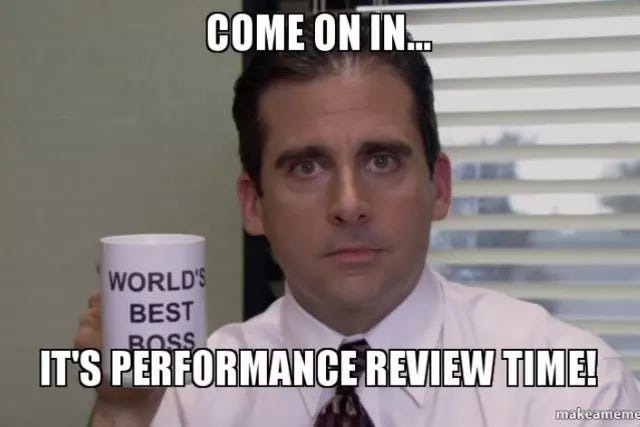
Evaluation is the most efficient way to gain both broad and specific insight on how you’re doing. Leaving space for qualifiable, qualifiable, and anecdotal evaluation is important because while the metrics can offer some really wonderful insight and data, they don’t afford the nuance or specifics that anecdotal evidence can provide. This is were your net promoter score lives, your product reviews thrive, and Google ratings some in.
People love metrics at a glance, and the social status appeal of “ an average review of 4.7 out of 5 from over 7 thousand clients” cannot be denied, neither can “we have a Net Promoter Score of 86, but our average review for response time is 1/5”… we need to do some work there. Evaluation often gets wrapped up with coaching, which can be useful as a pressure release valve for dissatisfied community members, but take unqualified coaching with a grain of salt and a line of curiosity.
Coaching is all about: how can I do better, and this is how you can be excellent. While sometimes we all need unsolicited affirmation and evaluation, unsolicited advice regularly ranks as one of the single most infuriating gifts to receive under any circumstance, especially from you family around the holidays. You can always set a boundary here.
We would encourage you to seek out coaching as often as possible from as many people as is valuable, using your own curiosity to find the points of interest and utility in any would-be-coach’s locker-room talk. They may not be experts in whatever it is they are ranting about… but they are the world-leading expert on their internal experience… and that will always run gold in veins.
Community Feedback
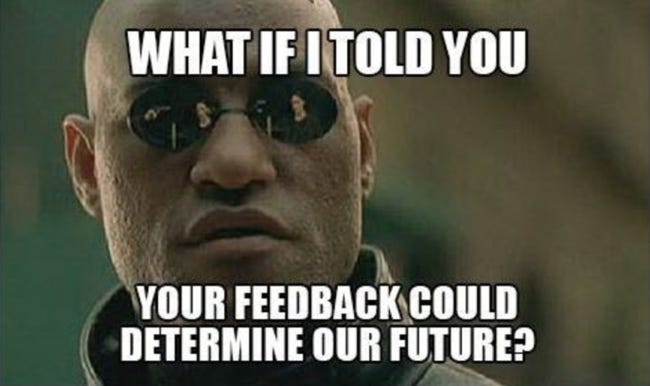
Providing forums and channels for feedback to fill can become the beating heart of your community’s continuous improvement cycle. Two things are certain among groups of people: change is an immutable law of togetherness, and we can always be and do better together. By designing survey, forms, questions, and forums in thoughtful ways, your community can benefit from a combination of quantitative and qualitative insights. Both are important, and each has unique benefits.
Engaging and incentivizing members to consider what they appreciate and celebrate in the community can provide glimpses of what the community values most about itself and fuel both their and your motivation when things are difficult or overtaxing. These celebrations can serve as anchor points to return to and starting points to build on. It’s amazing how impactful a meditation on your personal appreciations for your community and its members can be when you are seeking inspiration. It is surprising how much pride the community itself can draw from the appreciation it generates for itself and the recognition of those it serves and inspires.
In community, like a regular check up with your physician, evaluation is an opportunity to learn about your activities, group dynamics, and members’ desires over time. Deciding on standards by which to evaluate the community’s health, engagement, and growth opportunities gives a guiding light for where to focus your attention and the attention of your core community supports. It affords context and direction.

Coaching serves two primary functions, and the first is as a pressure release valve. We all have latent desires to give advice, foster and share our creativity, and see things done better. Channeling that energy into a productive outlet is an opportunity for everyone to use that muscle and feel a sense of service and accomplishment in doing so. The second is capitalizing on a unique benefit of community orientation: group intelligence. Your community is filled with experts on their personal experience and experts on the things they have dedicated their lives to pursuing. Advice given from each of these perspectives are uniquely beneficial and sometimes can be the seed for remarkable ideas to blooms from, better yet, they often come with a initiative champion already built in.
Metrics matter: what are you measuring?
When we really dig into comprehensive feedback, we uncover the absolute beauty of metrics.
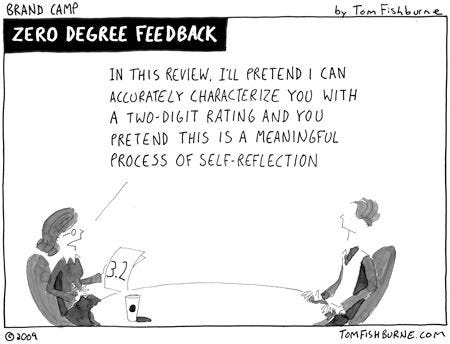
It's crucial to align these metrics with the community's goals, objectives, and desired outcomes. Additionally, establishing baselines, benchmarks, and targets can help track progress and identify areas for improvement.
When designing effective metrics to track community feedback, health, engagement, and efficacy, it's important to consider a combination of approaches. Here are some example sections that are particularly useful for monitoring community health with an explanation for why each is important. While not all questions may be relevant for your community, we hope that the explanation of each section along with the sample questions can provide you with the inspiration to author your own!
Engagement
Engagement metrics directly measure how actively involved community members are in events and activities. High levels of engagement typically indicate a vibrant and thriving community where members feel motivated to participate. Feedback in this area helps identify what activities resonate most with members and how the community can better cater to their interests and availability, ensuring events are both appealing and accessible.
Quantitative Questions:
On a scale of 1 to 10, how satisfied are you with the variety of events offered by the community?
How many community activities have you participated in over the last month?
Have you volunteered for roles or tasks during community events in the past year? (Yes/No/Maybe)
Qualitative Questions:
What motivates you to actively participate in this community's events?
How could our events be improved to better align with your interests and enhance your experience?
Can you describe a recent event that you found particularly engaging or rewarding, and why?
Retention and Growth
Retention and growth metrics are crucial for assessing the community's health over time. They provide insights into whether the community is sustaining its membership and attracting new members, which are key indicators of its appeal and long-term viability. Feedback here helps understand the reasons behind members' decisions to join, stay, or leave, enabling targeted strategies to enhance member satisfaction and community growth.
Quantitative Questions:
On a scale of 1 to 10, how likely are you to continue participating in community activities in the coming year?
How many new members have joined the community in the past year?
Have you recommended this community to others in the past year? (Yes/No/Maybe)
Qualitative Questions:
Why have you chosen to remain a part of this community?
What attracted you to join this community initially, and are those factors still important to you?
What improvements or changes would make you more likely to recommend our community to others?
Satisfaction
Member satisfaction is a comprehensive indicator of how well the community meets the needs and expectations of its members. It affects members' overall happiness and their decision to remain part of the community. Collecting feedback on satisfaction helps identify strengths and areas for improvement, guiding decisions that can enhance the quality of the community experience and increase members' loyalty and advocacy.
Quantitative Questions:
On a scale of 1 to 10, how well does the community meet your expectations?
Do the community facilities and resources meet your needs? (Yes/No/Maybe)
Would you recommend our community to friends or family? (Yes/No/Maybe)
Qualitative Questions:
If you could change one thing about the community to better satisfy your needs, what would it be?
How does your involvement in the community affect your personal or professional life?
What specific improvements or changes introduced recently have you found most beneficial?
Social Health
Social health and support reflect the quality of relationships and the sense of belonging among community members. Strong social ties and a supportive environment are fundamental for members' well-being and resilience, influencing their engagement and satisfaction. Feedback in this area helps uncover how connected and supported members feel, which is vital for fostering a nurturing and inclusive community culture.
Quantitative Questions:
On a scale of 1 to 10, how strong do you feel the sense of community is among members?
On a scale of Strongly Disagree to Strongly Agree, how much do you believe the statement: I belong?
Is there a reliable support network within the community that you feel you can turn to in times of need? (Yes/No/Maybe)
Qualitative Questions:
Can you describe a time when you felt particularly supported by the community?
What activities or events do you think could enhance the sense of belonging among community members?
How do you contribute to fostering a supportive environment within the community?
Impact
Community impact measures the effectiveness of the community in achieving its broader goals and making a difference in the larger environment, whether locally, sectorally, or globally. Feedback on impact assesses whether the community is fulfilling its mission and how it is perceived externally. This feedback is essential for aligning community projects with member values and external expectations, enhancing both internal motivation and external reputation.
Quantitative Questions:
On a scale of 1 to 10, how impactful do you believe the community’s initiatives are on local or sector-specific issues?
How many community projects aimed at external impact have you participated in this year?
Has the community achieved its stated goals for the year? (Yes/No/Maybe)
Qualitative Questions:
Can you describe an example where a community project successfully impacted the local area or a specific sector?
What do you think are the most significant barriers to increasing the community’s impact?
How could the community better leverage its resources to amplify its impact?
Embrace the Power

By incorporating these practices and recognizing the different types of feedback, we can harness the full potential of our communities. Feedback is not just a tool but a bridge to continuous improvement, stronger connections, and collective growth. It's a call to action, a reminder that we are always in the process of becoming better versions of ourselves. When we treat feedback as the invaluable resource it is, we create a culture of openness, trust, and mutual respect.
So, take the time to listen, understand, and act on the feedback you receive. By doing so, you not only improve your leadership but also empower your community to reach new heights. Remember, the goal is not perfection. Never let perfection stand in the way of greatness. Instead, perpetually seek progress. Every piece of feedback, no matter how small, is a step toward a brighter, more inclusive, and more effective community. Embrace feedback, cherish it, and let it guide you and your community toward your true potential.







Responses